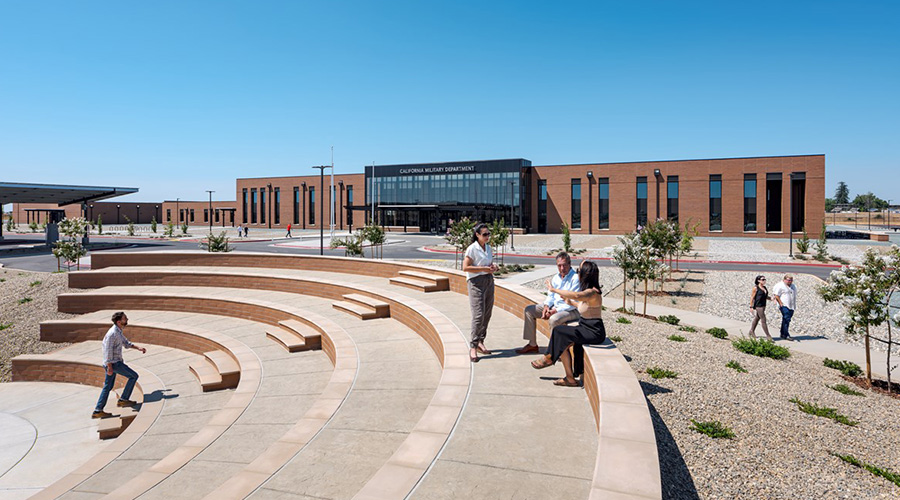Constructing for Net Zero and LEED

The CMD Consolidated Headquarters Complex is one of the first few large-scale campuses targeting net zero energy implemented by the State of California. The complex produces as much energy as it consumes over the course of one year, when accounted for at the site.
Located on a 31-acre site adjacent to Mather Airport, the multi-building campus houses a headquarters with a readiness center, emergency operations center/network operations facility, network operations security center, badging access control point, warehouse, and central utility plant.
Stantec and The Walsh Group delivered the five buildings spanning 285,700 square feet as a net zero energy project aimed to reduce greenhouse gas emissions and improve energy efficiency.
The site improvements in the $160 million project included access roadways, privately owned vehicle parking lots with photovoltaic canopies, controlled perimeter security fencing in compliance with Antiterrorism and Force Protection guidelines, entry control point, stormwater management, site amphitheater, and motor vehicle fleet parking areas.
With the goal of earning LEED (Leadership in Energy and Environmental Design) Gold certification, the complex was constructed to reduce environmental impact, optimize performance, lower energy and operating costs, conserve resources, and increase occupant satisfaction and productivity.
Perfect positioning

Each facade of the five facilities is specific to the building orientation to reduce solar gain and aid with daylighting.
Sustainable exteriors

Outdoor sustainable strategies include stormwater management, limited irrigation, photovoltaic array and panels, native planting, electric vehicle charging stations, and low-emitting vehicle priority parking.
Energy efficient HVAC

Inside, radiant heating and cooling minimize load on air-handling equipment and improve occupant comfort. In addition, the heat recovery chiller harvests heating energy from the onsite base cooling load.
Controlling light

Daylighting controls are used in all daylit zones to reduce energy usage and take advantage of natural light.
By FacilitiesNet Staff
The post "Constructing for Net Zero and LEED" appeared first on Building Operating & Management

